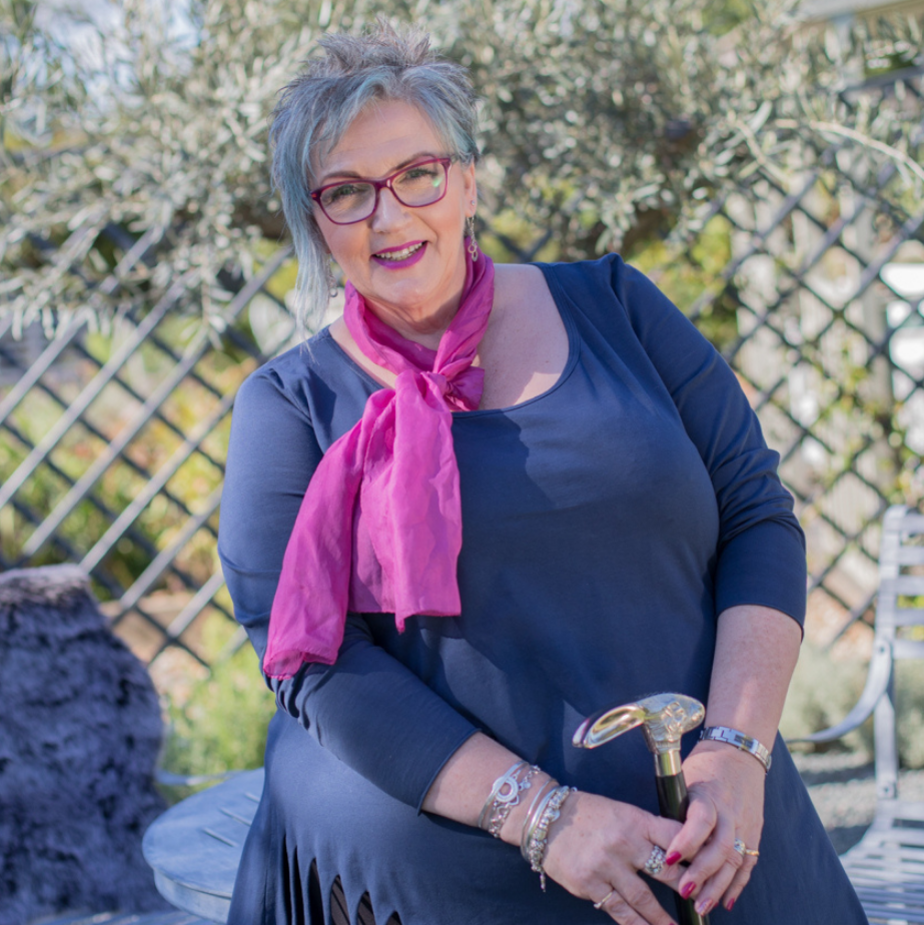How to flatter your figure
FFS - Figure flattering styling
This week I want to explore the word flattering.
I use the term in my work as part of my 4 step Project FAB! framework. It sits in the SHAPE section and I talk about FFS - figure flattering styling and BS – body shape. If you look it up in the dictionary it describes the meaning as enhancing someone’s appearance, to show to advantage and to look better than reality.
So, this got me thinking, who is actually deciding what is ‘better’? Therefore, if we use the term and say it to someone else is the word ‘flattering’ a compliment or a judgement?
Insecurities and projected beliefs around body image
Let’s explore…
There are some people in my industry who use such terminology as figure faults which I find quite disturbing. Imagine paying someone to look you up and down and decide what you should and shouldn’t wear based on, what is essentially, their opinion of how YOU should look! What THEY deem to be flattering.
Then we have our own inner voices, the little critical creatures who live in our heads and pipe up about our insecurities. I call them SID’s – self image demons. We often still carry around emotional baggage emotional to do with clothes and confidence from our younger days. Maybe there was a mean comment from a sibling, or something a nasty boy said at school, and here you are, 40+ years later, still not wearing a skirt because somebody once said you had knobbly knees or tree trunk legs.
Not to mention the conditioning we’ve often had from our mothers, imposing their own rules and judgements that were passed down from their mothers. You can’t wear certain colours together, or skirts always have to be over the knee or only tarts wear red shoes – you know the kind of thing I mean. Quite often parents were our appearance gatekeepers when we were growing up and projected their insecurities and beliefs onto us.
(You’re a grown woman now and all this is being carried around unnecessarily. I urge you to let it go.)
The perfect body shape
And let’s not forget that we are so conditioned by the media that our bodies should look a certain way. We are bombarded with photoshopped images, distorting bodies, elongating legs, a nip here and a tuck there. Even the girls in the magazines don’t actually look like the girls in the magazines. So few of us resemble these ‘ideals’ it’s no wonder that so many of us are unhappy with our bodies.
This is not a new thing. Ideals around what is considered beautiful, and the perfect body shape has been depicted through art in paintings and sculpture for centuries. Who hasn’t joked about having curves like a Rubenesque painting? In the Renaissance period, curvier women were admired and deemed a good ‘catch’ as curves were aligned to fertility and good childbearing hips.
Beauty ideals and standards also vary across generations – remember back in our day when it was all about androgyny with the likes of Annie Lennox and Boy George. These days the Kardashian influence is rife – curves, but only in the right places, the fashion being for a big bum, lips full of fillers, Angry Birds’ eyebrows and poker straight long hair…
Plus size fashion industry
Similarly, the majority of fashion brands who encourage celebrating and embracing curves by offering plus size ranges will, more often than not, use models that still conform to what is considered the ideal – they’re in proportion and going in and out in all the right places so as to be aesthetically pleasing. Flat stomachs with no kangaroo pouches over hanging etc. Don’t get me started on ‘plus size’ fatshion – that’s a whole other topic that I don’t have time for today. We are lucky that it isn’t still called the ‘Stoutwear Industry’ like it was in the early 20th century. 😊
Anyway, let’s get back to the word ‘flattering’. I read an article in the Guardian last summer that suggested anyone from Generation Z (born 1995-2010) onwards would possibly argue that the word is outdated and a passive aggressive way of body policing and fat shaming. There is a suggestion that the word flattering can be interchangeable with slimming. If we substitute flattering for slimming, I can see they have a point and it’s made me stop and think about how I use the terminology.
Disguising 'figure faults'
My work is about empowering women and boosting confidence. It’s not for me to judge or decide on whether or not my clients ought to cover up their arms because they are a certain size, or to say they should wear a particular style of trousers to minimise their hips. I certainly would never use the term ‘figure faults’ – this is the type of nonsense that gives the image industry a bad name and makes the very women who really want help with their wardrobe shy away from investing in it. They don’t need any more external judgement pointing out what they are doing ‘wrong’ and knocking their confidence in their ability to make the ‘right’ decisions.
Many clients come to me knowing what used to work when they were younger but doesn’t anymore and this can result in wardrobe wobbles and a loss of confidence. Obviously, I know there a tips and tricks with clothing that you can use if you do feel self-conscious about specific things around your body image. If it is affecting your confidence and you bring it up, I will happily share this knowledge - BUT only if YOU bring it up. There’s no judgement from me about any of it.
Where some stylists make these ‘figure fault’ judgements to transform and makeover, my approach is more about empowering you to make your own judgements and transformation. Then, when you have figured out what works for you, your wardrobe becomes a joy to open, experimenting and creating “your look” is fun.
Project FAB! Your guide to confidence with colour & clothes
In summary, I have decided that I will continue to use the term FFS (Figure Flattering Styling) because it’s a tool in my toolbox that I can share with people on their journey.
In an ideal world we’d all be totally happy with our bodies, fully accepting them as they are and not give a shit about what other people think. We’d have not been conditioned by society, our parents and the media that one way of looking is better than another.
Unfortunately, that is not the reality and if I can help you find a style of dress that YOU feel is more flattering and gives you confidence then that’s all good.
If you’d like to know more about my Project FAB! 4 step framework to confidence with colour and clothes you can read my blogs here.
Or invest in buying my book – treat yourself to an early Christmas present. You can get a signed copy direct from me here or get it from Amazon – paperback or Kindle version.
If this has resonated with and you’d like a chat about working with me 1:1 then book a call here
Alternatively, I have an online self-study course that you can have immediate access to for £197.
Share this post:












